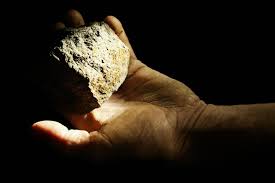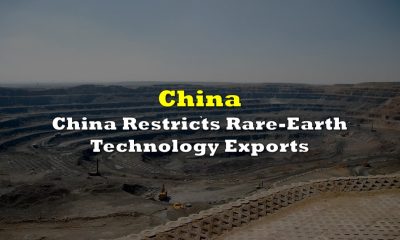Energy & Critical Metals
Understanding the Critical Minerals Sector
By Ron Hall Critical minerals can be defined as minerals that have few or no…

By Ron Hall
Critical minerals can be defined as minerals that have few or no substitutes; are strategic and somewhat limited commodities; or are increasingly concentrated in terms of extraction and, even more, in terms of processing location.
Canada currently has a list of 31 such minerals of which six are prioritized in the government’s strategy for their distinct potential to spur Canadian economic growth and their necessity as inputs for priority supply chains. These are lithium, graphite, nickel, cobalt, copper, and rare earth elements. Critical minerals are considered the building blocks for the green and digital economy and are used in a wide range of essential products, from mobile phones to solar panels, electric vehicle batteries to medical and healthcare devices, to military and national defence applications. Growth in these applications is expected to boost their global demand and according to the International Energy Agency, the energy sector’s overall needs for critical minerals could increase by as much six times by 2040. The North American zero-emission vehicle (ZEV) market alone is estimated to reach $174 billion by 2030, creating more than 220,000 jobs in mining, processing, and manufacturing.
In 2019, the federal government launched the Mines to Mobility initiative to build a sustainable battery innovation and industrial ecosystem in Canada and according to the government, to date, the initiative has attracted more than $7 billion in announced investments to capture opportunities in the growing global battery market. The federal government plan to continue to support Canada’s battery ecosystem through the Canadian Critical Minerals Strategy by building value chains that position Canada as a global leader in the innovative and sustainable production of ZEV batteries.
But keeping up with demand will prove challenging for two reasons. One is low supply, as current deposits of critical minerals are simply not enough to meet the expected surge in demand and the other issue is that deposits tend to be concentrated in the hands of a few countries that can have outsized influence on supply chains. Critical mineral processing is even more concentrated, with China the dominant player. China not only is a key provider of the world’s copper, lithium, and rare earth minerals but also refines as much as two-thirds of all cobalt, over 55% of lithium, 40% of copper, and close to one-third of the world’s nickel.
Many countries are now increasing investment in the search for and processing of critical minerals to diversify their supply chains and reduce vulnerabilities to regimes that may become unfriendly. New deposits are being discovered – in January 2023, Sweden’s state-owned mining company announced the largest discovery of rare earth minerals in Europe which in time should reduce the region’s reliance on imported resources.
Canada released “The Canadian Critical Minerals Strategy” in 2022, which seeks to power a green and digital economy. The country possesses significant amounts of many of the world’s most critical minerals as well as the expertise to scale up exploration of these minerals.
Australia, already the top lithium extractor globally, has redoubled its exploration efforts, with government officials suggesting peak discovery could still be 5–10 years away.
As for processing, in the U.S., the Biden administration’s Inflation Reduction Act (IRA) encourages reshoring and friend-shoring (i.e., relocating processing back to the U.S. or to geopolitical allies). The IRA will invest billions of dollars to bolster critical mineral supply chains for the U.S. and its allies. For example:
In order to receive tax credits, the IRA requires car manufacturers to process a significant portion of battery materials locally or in a country partnered with the U.S. on a free trade agreement, such as Canada, Mexico, Australia, or Chile.
In 2022, the U.S. Defense Department awarded Australia’s Lynas Rare Earths, the only major producer of rare earth materials outside of China, a $120 million contract to establish a processing facility in the U.S.
Australia, which previously sent raw minerals to China for processing, is now looking to restore this activity to secure its own supply chain and that of its allies. The latter are looking for clear alignment of their long-term national interests with those of their critical mineral suppliers. Where such interest is not clearly aligned, investment ownership is being redesigned. For example, late in 2022, Canada toughened its foreign ownership rules, requiring three Chinese firms to dispose of their stakes in domestic lithium miners.
Meanwhile the search is on for alternatives to expensive critical minerals, or new technology solutions that reduce the use of these materials in the production of key components. In 2020, Tesla announced plans to develop a cobalt-free EV battery. By Q1 2022, almost half of its EVs had no cobalt in their batteries.
Another promising innovation is battery recycling. EV batteries typically last between 10 and 20 years, so by the time EV demand eventually peaks, many batteries will be available for recycling, reducing the need for additional supplies of newly extracted ores. In fact, by 2040, the IEA expects that extracting copper, lithium, nickel, and cobalt from old batteries could reduce the supply requirements of these minerals by some 10 %.
In extreme cases, resource nationalism can lead to the weaponization of critical minerals. This risk can be most acute where autocratic regimes are emboldened by a rapid influx of money and leverage from critical minerals. Such nations can become unfriendly or unstable, and at the very least can make life difficult for international buyers. In 2010, China banned exports of critical minerals to Japan for a few months due to a dispute in the East China Sea.
More recently, Russia weaponized its natural gas supply to Europe as a strategy in its war with Ukraine. Both instances show how critical mineral supply can be imperiled by the whims of authoritarian regimes or those prone to shifting alliances.

Uranium Exploration Company Announces Additional Staking in the Athabasca Basin
Source: Streetwise Reports 12/22/2023
Skyharbour Resources Ltd. announced an update from its Canada-based Falcon Project along with additional…
Tesla Launches New Mega Factory Project In Shanghai, Designed To Manufacture 10,000 Megapacks Per Year
Tesla Launches New Mega Factory Project In Shanghai, Designed To Manufacture 10,000 Megapacks Per Year
Tesla has launched a new mega factory…
Giving thanks and taking stock after “a remarkable year”
An end-of-year thank you to our readers, industry colleagues and advertisers before Electric Autonomy breaks from publishing until Jan. 2
The post Giving…










